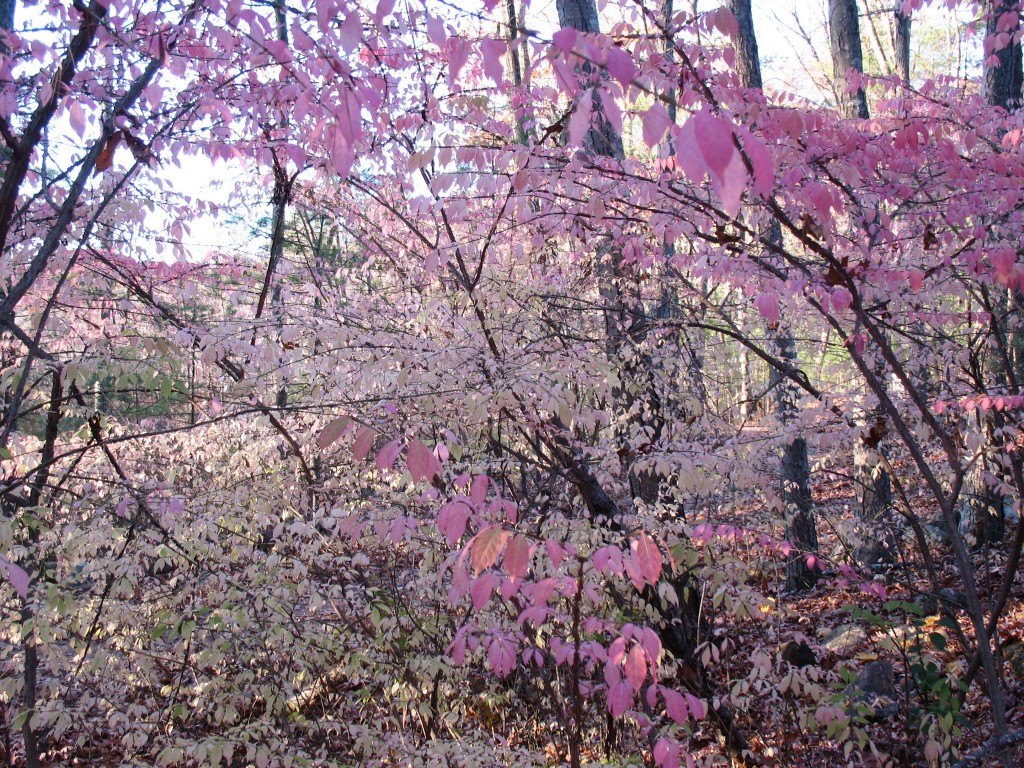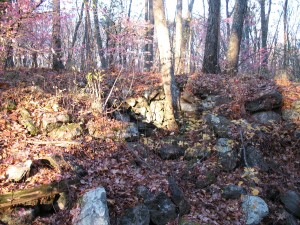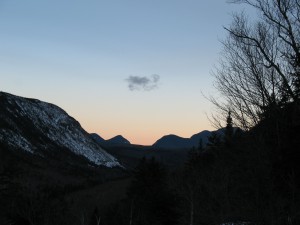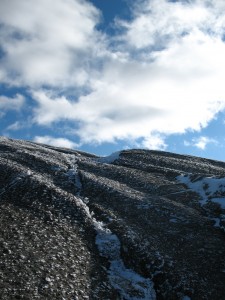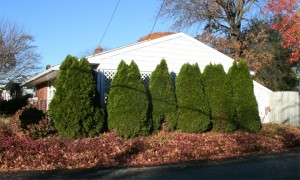Estabrook Woods: In November the downed leaves make a noisy pathway, and they hide the roots and stones, forcing me to pay attention. This repeated phrase is my late fall mantra. But sometimes, when I do look up, I find pale beauty in the understory. With the leafy canopy gone, light streams into this lower region, and there, it finds the pale fire of the burning bush and the parchment delicacy of the ferns.
In its suburban yard incarnation the burning bush is often just that, a fiery flare of red leaves that, depending upon the individual bush, either burst into short-lived flame or burn steadily for days. But in the woods the bush is a subtle fire, a pastel murmur of flame that keeps in it hints of green until deep autumn.
Now seems the right time to acknowledge that the burning bush is an invasive species; in some states (our Massachusetts, for example) it is even an outlaw. Nurseries are forbidden its sale, and occasional posses of citizens root out clusters where they are found.
Here, I may start a fire of my own, but, in this case, I can’t summon alarm. In fact the whole invasive species argument seems to me arbitrary, as the floral and faunal history of the world seems one of migration rather than homesteading. Yes, I will agree that in some cases where a purple loosestrife or a water chestnut crowds out all competitors and changes a whole land- or waterscape, I feel regret. As a fan of goldenrod, for example, I rue the way some late summer fields that used to say gold now speak purple. (Added note: recently I read – and now can’t rediscover – that goldenrod is the most (or second-most) noted plant in Thoreau’s journals).
But are not we also an invasive species? Certainly in our subgroups we are, riding like so many Huns or Visigoths into the “open” territory of some other peoples and animals and declaring it open for our business.
In any event, each fall as I walk these woods, and especially as I reach the old limekiln site along the Carlisle Road, I spend time with the pink and pale fire that burns in the understory air and lights the ground. If you step into the midst of this cluster with the sun slanting in from the west, the light is so intense it feels warm, even as the wind rackets coldly in the bare branches high above.
Added note: help, by the way, is on the way. A horticultural scientist at the University of Connecticut has developed a sterile version of the burning bush. Soon, perhaps, as sales of these popular bushes continue, their seeds, spread by birds who eat them, will fall on the cold earth and nothing will rise from them.

